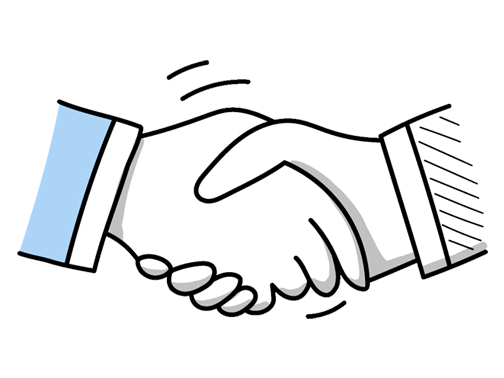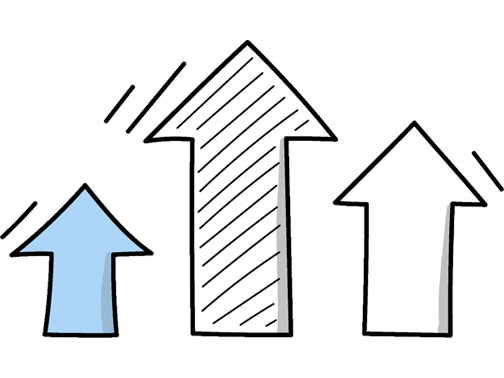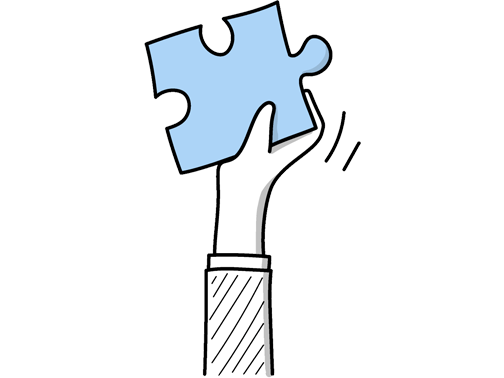Human Resources Manager Interview Questions (2025 Guide)
Find out common Human Resources Manager questions, how to answer, and tips for your next job interview
Practice Interviews Online - Identify your strengths and weakness in a realistic Human Resources Manager mock interview, under 10 minutes
Practice Now »Human Resources Manager Interview Questions
Hiring managers ask this question to understand how you evaluate the impact of your HR efforts on the organization’s goals. You need to mention specific metrics like employee turnover, time-to-fill positions, employee engagement scores, and training effectiveness to show you track and improve HR initiatives systematically.
Example: When evaluating HR initiatives, I focus on metrics like employee engagement scores, turnover rates, and time-to-fill positions. For example, after launching a new development program, I track participation and feedback to see if it boosts retention or performance. These data points help ensure our efforts truly support both employee growth and business goals.
Employers ask this question to see if you understand how to drive employee performance and align it with company goals. You need to explain that an effective system includes setting clear, measurable objectives, providing regular feedback and development, and using fair, data-driven evaluations to reward performance.
Example: An effective performance management system starts with setting clear, achievable goals so everyone knows what success looks like. Regular check-ins help catch issues early and support growth, like coaching conversations that keep people on track. It’s also important to assess contributions fairly, recognising effort and outcomes to motivate the team. Ultimately, it creates a transparent environment where everyone feels valued and driven to improve.
Hiring managers ask this question to see how you effectively use communication skills to handle conflicts and maintain a positive work environment. You need to describe a clear example where you listened actively, communicated clearly, and helped find a solution that benefited everyone involved.
Example: In a previous role, two team members disagreed over project responsibilities, affecting morale. I arranged a private conversation with both, encouraging open dialogue and active listening. By clarifying expectations and finding common ground, we cleared misunderstandings and agreed on a way forward. This helped rebuild trust and improved collaboration within the team. Communication was key to turning tension into a positive outcome.
What they want to understand is how you prioritize communication to keep your team aligned and productive. You should say you use regular meetings, open channels for feedback, and clear documentation to ensure everyone is informed and engaged.
Example: To ensure clear communication within my HR team, I prioritise open dialogue and regular check-ins. For example, I encourage team members to share updates and challenges in weekly meetings, fostering transparency. I also promote using collaborative tools to keep everyone aligned. This way, we maintain a shared understanding and can address issues promptly, creating a supportive environment where ideas and feedback flow naturally.
This question is designed to assess your conflict resolution and communication skills in managing challenging personnel issues. You need to describe a specific situation, explain your approach to resolving it calmly and fairly, and highlight the positive outcome for both the employee and the organization.
Example: In a previous role, I managed a team member struggling with punctuality, which affected morale. I arranged a private conversation to understand their challenges and collaboratively set clear expectations and support measures. Over time, their attendance improved significantly, and the team’s overall productivity benefited. It reinforced for me the value of empathy paired with clear communication in resolving workplace issues effectively.
This interview question helps assess your decision-making skills and your ability to handle unpopular choices while maintaining professionalism. You need to explain the situation briefly, describe your reasoning, and highlight how you communicated and managed the impact effectively.
Example: In a previous role, I had to implement a new attendance policy that wasn’t initially well-received. I made sure to communicate openly, explaining the reasons and listening to concerns. By involving the team in adjustments, trust grew and compliance improved. It was tough, but staying transparent and empathetic helped turn a challenging decision into a positive outcome.
This question assesses your ability to lead change and manage complex projects smoothly. Explain that you would create a clear implementation plan, communicate continuously with all stakeholders, and ensure thorough training and support for staff throughout the transition.
Example: If I were to introduce a new HR software, I’d start by mapping out each step clearly to avoid surprises. Keeping everyone in the loop—from leadership to daily users—helps ease concerns and gather useful feedback. I’d also organise hands-on sessions so the team feels confident using the system. In my last role, this approach made the switch smoother and boosted overall adoption.
What they want to understand is how you effectively lead and energize your HR team to deliver results aligned with company goals. You need to explain how you set clear objectives, keep the team motivated through recognition or incentives, and create a supportive environment that encourages collaboration and trust.
Example: I believe in setting straightforward targets that everyone understands and feels confident about reaching. Keeping the team motivated means recognizing their efforts regularly and encouraging open communication. Creating a supportive atmosphere where ideas are welcomed and challenges are shared helps people stay engaged. For example, I hold monthly check-ins to celebrate successes and address any hurdles, which keeps the team connected and focused on our shared goals.
This interview question aims to assess your awareness of legal requirements and your proactive approach to maintaining compliance in HR. You need to explain that you stay informed about labor laws through continuous research and training, and implement clear policies and regular audits to ensure all HR practices follow regulations.
Example: I stay up to date with UK labor laws through regular training and reliable resources, ensuring our policies reflect current regulations. I also foster open communication, encouraging employees to raise concerns early. For example, when new legislation on workplace flexibility emerged, I quickly adapted our guidelines and held team briefings to keep everyone informed and compliant. This proactive approach helps prevent issues before they arise.
Questions like this assess your technical proficiency and how effectively you apply HR software to streamline processes. You need to mention the specific systems you’ve used and give a brief example of how you utilized them to improve efficiency or manage tasks.
Example: I’ve worked with systems like BambooHR and Sage People, primarily to streamline recruitment and manage employee records efficiently. In my previous role, I used these tools to automate onboarding processes and generate reports that helped identify training needs. This not only saved time but also improved communication across teams, making HR operations smoother and more responsive to staff requirements.
Questions like this assess your ability to effectively communicate with diverse groups, a key skill for fostering understanding and collaboration in HR. You need to explain how you adjust your language and approach based on the audience’s role and level, and acknowledge the importance of considering cultural and individual communication preferences.
Example: I adjust my communication depending on who I’m speaking to—whether that’s senior leaders, team members, or new hires. For example, I keep things straightforward and data-driven with executives but adopt a more supportive tone when onboarding staff. I also stay mindful of different cultural backgrounds and personal styles to make sure messages resonate. This approach helps build trust and ensures HR initiatives align well with the whole organisation’s needs.
This interview question helps the interviewer understand how you manage employee concerns and guide your team through transitions. You need to explain that you listen to concerns, communicate transparently, and involve the team in the change process to build trust and reduce resistance.
Example: When facing resistance to change, I focus on open communication and understanding concerns. I involve the team early, listening to their feedback, which helps build trust and ownership. For example, during a recent policy update, hosting informal chats allowed us to address worries directly, easing the transition and turning initial hesitation into genuine support. It’s about creating a space where everyone feels heard and valued.
This question assesses your ability to diagnose and respond quickly to workforce challenges. You need to say you would first gather data through exit interviews to understand reasons for turnover, then create targeted strategies like engagement programs, and keep communication open with all stakeholders.
Example: If I noticed a sudden rise in turnover, I’d start by quickly gathering feedback from exit interviews and employee surveys to understand what’s driving people away. From there, I’d work with the team to introduce meaningful changes—whether that’s improving work-life balance or career development opportunities. Throughout, I’d keep open communication with both staff and leadership to ensure everyone feels heard and involved in the solution.
What they want to understand is how you manage sensitive situations with empathy and clarity. You need to explain the context briefly, focus on your clear and honest communication approach, and highlight how you supported employees through the tough message.
Example: In a previous role, I had to inform the team about upcoming restructuring that affected several positions. I approached it with honesty and empathy, holding a group meeting followed by one-on-one conversations to address concerns. Being transparent about the reasons and offering support helped maintain trust and morale during a challenging time.
Questions like this assess your ability to create and share a compelling vision that aligns with company goals and motivates your team. You need to explain how you set clear, aligned objectives and communicate them effectively to all stakeholders to ensure commitment and drive results.
Example: When setting a vision for the HR team, I start by understanding the wider business goals and shaping a clear direction that aligns with them. I make sure to share this vision openly, tailoring the message to resonate with leaders and team members alike. By involving everyone in the journey and regularly celebrating progress, I keep the team motivated and committed to turning our shared goals into reality.
What they want to know is how you recognize problems and lead change effectively in HR. You need to explain how you identified the need for the policy, communicated and trained employees clearly, and tracked results to ensure ongoing success.
Example: In my last role, I noticed onboarding was inconsistent, so I developed a clear induction policy. I worked closely with managers to communicate its benefits and ran training sessions to ease the transition. To track success, we gathered feedback and monitored new hire engagement, adjusting as needed. This approach helped create a smoother experience and improved retention over time.
Hiring managers ask this question to understand your practical experience in managing benefits and compensation while ensuring legal compliance and employee satisfaction. You should explain how you developed or improved programs, ensured they met UK laws, and measured their success through feedback or audits.
Example: In my previous role, I reviewed and updated our benefits packages to stay aligned with UK regulations, ensuring fairness and competitiveness. I worked closely with payroll and legal teams to maintain compliance and adapted programs based on employee feedback and market trends. To gauge success, I monitored engagement levels and turnover rates, making adjustments where needed to keep employees motivated and supported.
Interviewers ask this to see if you can empower others and build strong teams. In your answer, describe a specific situation where you coached or mentored someone to improve their leadership abilities and the positive impact it had.
Example: In my previous role, I identified potential leaders by encouraging team members to take on small projects, offering guidance while allowing them autonomy. One junior colleague grew confident managing a team after I facilitated regular feedback sessions and provided resources for skill-building. Seeing their progress reinforced my belief that leadership develops best when people are supported to learn through experience rather than just instruction.
Questions like this assess your ability to bridge gaps between management and employees for better collaboration and engagement. You should explain how you use regular meetings, adapt messages for varied audiences, and mediate conflicts to ensure clear, transparent communication.
Example: I focus on creating open channels where everyone feels heard, using regular check-ins and clear, concise messaging tailored to different teams. For example, I’ve introduced monthly town halls combined with anonymous feedback tools to bridge gaps and encourage honest dialogue. This approach not only clarifies expectations but also builds trust, helping management and employees work together more effectively.
This interview question aims to assess your ability to handle change and demonstrate flexibility in a dynamic work environment. You need to explain how you evaluated the change, the steps you took to adapt, and the positive results or insights you gained from the experience.
Example: In a previous role, our company shifted to remote work suddenly. I took time to understand the new dynamics by gathering feedback and identifying key challenges. I then implemented clear communication channels and support systems, which helped maintain team morale and productivity. This experience taught me the importance of flexibility and proactive leadership during uncertain times, ultimately strengthening our team’s resilience.
This interview question aims to assess your conflict resolution skills and ability to maintain a positive work environment. You need to explain how you listened to both sides, remained neutral, and helped them find a compromise or solution.
Example: In a previous role, two team members disagreed over project responsibilities, affecting their collaboration. I brought them together for an open conversation, allowing each to express their perspective. By focusing on common goals and encouraging active listening, we clarified misunderstandings and agreed on clear roles. This not only resolved the conflict but also strengthened their working relationship going forward.
Employers ask this question to see how you address performance issues with empathy and structure. In your answer, explain that you would first identify the root cause through direct conversations, then create a clear improvement plan with measurable goals, and finally monitor progress with regular check-ins.
Example: If someone’s struggling with their work, I’d start by having an open conversation to understand what’s going on—whether it’s unclear expectations or personal challenges. From there, I’d work with them to set clear, achievable goals and offer support, like training or mentoring. Regular check-ins help keep things on track and show they’re not facing it alone. It’s about creating a supportive environment where they can improve and feel valued.
What they want to understand is how you effectively manage and motivate a team under pressure while maintaining clear direction and adaptability. You need to say that you set clear goals and expectations, supported and motivated the team through challenges, and adapted your strategies to overcome obstacles.
Example: In a previous role, I guided my team through a tight deadline by breaking the project into manageable milestones. I kept communication open, encouraging input and addressing concerns early. When unexpected issues arose, I gathered the team to brainstorm solutions, fostering a collaborative spirit. Celebrating small wins helped maintain morale, and clear priorities ensured we stayed focused, ultimately delivering the project successfully and on time.
Hiring managers ask this question to see how you handle sensitive situations and protect the company's integrity. You should explain that you would promptly investigate the breach, inform the necessary stakeholders, and take corrective actions to prevent it from happening again.
Example: If I became aware of a policy breach, I’d first gather all the details to understand the situation clearly. Then, I’d engage with those involved and relevant teams to discuss the issue openly. From there, I’d work on a plan to address the problem and put measures in place to reduce the risk of it happening again—much like when we updated our data handling protocols after a minor incident last year.
Employers ask this to see if you understand the strategic steps needed for effective diversity and inclusion initiatives. You should say you would first assess the current culture using surveys or focus groups, then design policies aligned with business goals like training programs, and finally implement metrics and feedback loops to track progress.
Example: Starting with understanding the company’s existing culture and where it stands on diversity sets a solid foundation. From there, I’d work on creating policies and initiatives that not only promote inclusion but also support the organisation’s broader goals. It’s important to keep track of how these efforts are impacting the workplace through regular feedback and data, adjusting as needed to ensure real progress, much like what I’ve seen succeed in past roles.
Ace your next Human Resources Manager interview with even more questions and answers
Common Interview Questions To Expect
The interviewer is looking for a brief overview of your professional background, skills, and experiences that are relevant to the HR Manager role. Focus on your achievements and how they align with the job requirements.
Example: Sure! I have been working in Human Resources for the past 7 years, with experience in recruitment, employee relations, and training. I have a proven track record of implementing successful HR strategies that have positively impacted employee engagement and retention. I am excited about the opportunity to bring my skills and expertise to this HR Manager role in your company.
The interviewer is looking for a candidate to demonstrate their qualifications, skills, experience, and passion for the role. Answers should highlight how the candidate's background aligns with the job requirements and how they can contribute to the company's success.
Example: Well, I have over 5 years of experience in human resources, with a strong background in recruitment, employee relations, and training. I am passionate about creating a positive work environment and helping employees reach their full potential. I believe my skills and experience make me a great fit for this role and I am excited about the opportunity to contribute to the success of the company.
The interviewer is looking for specific examples of your strengths that are relevant to the role of a Human Resources Manager. They want to see how your strengths align with the requirements of the job and how you can contribute to the organization.
Example: Well, I would say my biggest strengths are my strong communication skills, my ability to problem-solve effectively, and my attention to detail. These strengths have helped me successfully handle employee relations, conflict resolution, and recruitment processes in my previous roles. I believe they will be valuable assets in this Human Resources Manager position.
The interviewer is looking for a clear and concise explanation of why you transitioned into a career in Human Resources. Be honest about your motivations and highlight any relevant skills or experiences that led you to make the change.
Example: I decided to change career paths because I realized my passion for working with people and helping them reach their full potential. My previous roles gave me valuable experience in communication and problem-solving, which are essential skills in Human Resources. I am excited to apply my skills in a new field where I can make a positive impact on employees' lives.
The interviewer is looking for examples of how you prioritize tasks, manage your time effectively, and handle stress in a fast-paced environment. Be honest and provide specific examples from your past experiences.
Example: Yes, I am definitely able to handle multiple responsibilities at once. In my previous role as a Human Resources Manager, I was responsible for recruitment, employee relations, and training programs all at the same time. I prioritized tasks based on deadlines and importance, and made sure to communicate effectively with my team to ensure everything was completed efficiently.
Company Research Tips
The company's official website is a goldmine of information. Look for details about the company's history, mission, vision, and values. Pay special attention to the 'About Us', 'Our Team', and 'News' or 'Blog' sections. These can provide insights into the company culture, key personnel, and recent developments or initiatives. Understanding these aspects can help you tailor your responses to align with the company's values and goals during the interview.
Tip: Don't just skim through the website. Take notes and try to understand the company's tone and language. This can help you communicate in a way that resonates with the interviewer.
Social media platforms like LinkedIn, Twitter, Facebook, and Instagram can provide a more informal view of the company. You can learn about the company's culture, employee engagement, and community involvement. LinkedIn can provide information about the company's size, industry, and employee roles. Twitter and Facebook can give insights into the company's communication style and customer engagement. Instagram can provide a glimpse into the company's culture and values.
Tip: Follow the company on these platforms to stay updated. Look for any common themes or recurring topics in their posts. This can give you an idea of what the company prioritizes.
Glassdoor is a platform where current and former employees anonymously review companies. It can provide insights into the company's work environment, salary ranges, benefits, and interview process. You can also find interview experiences shared by candidates who applied for similar roles. This can help you anticipate the type of questions you might be asked during your interview.
Tip: Take the reviews with a grain of salt. They are subjective and may not fully represent the company's culture or practices. However, they can still provide valuable insights.
Keeping up with industry news and trends can help you understand the company's market position and challenges. Look for news articles, industry reports, and market analyses related to the company or its industry. This can help you demonstrate your industry knowledge during the interview and show that you are proactive and well-prepared.
Tip: Use tools like Google Alerts to stay updated on the latest news about the company and its industry. Try to understand how industry trends might impact the company.
What to wear to an Human Resources Manager interview
- Dark-coloured business suit
- White or light-coloured shirt or blouse
- Conservative tie for men
- Closed-toe shoes, polished and clean
- Minimal jewellery
- Neat, professional hairstyle
- Light makeup for women
- Clean, trimmed nails
- Avoid strong perfumes or colognes
- Carry a professional bag or briefcase





